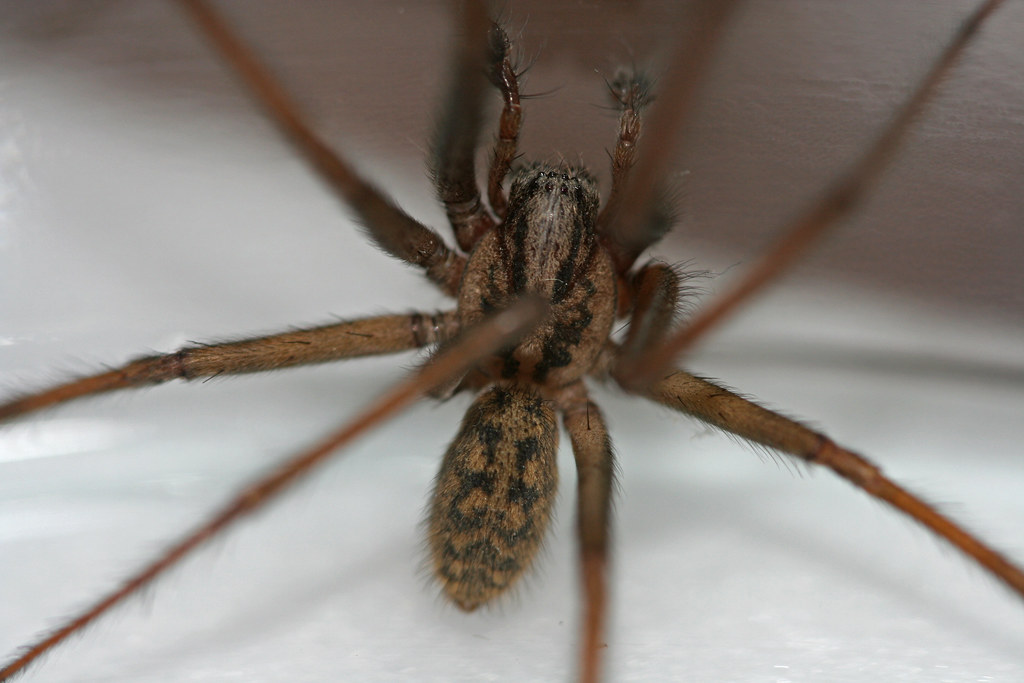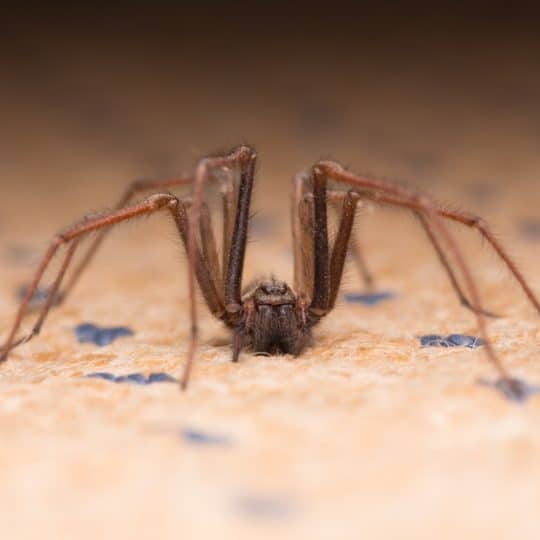Table Of Content

These sheet-like cobwebs can be so large that they may even connect multiple buildings to each other. When found outside around human structures, it is often in darker areas, such as flower beds, under logs, rock piles and other sheltered sites. Common house spiders might be seen on multiple webs close together or a web with more than one spider. If house spiders find a good spot with plenty of food, they do not mind if another spider produces a web nearby.
Eratigena Atrica – Giant House Spider
They’re some of the fastest-moving arthropods on Earth, famous for their agility. Brown Recluse spiders can be identified by the violin-shaped markings on their back, which leads to their commonly being referred to as fiddleback or violin spiders. They only have six eyes arranged in pairs in a semicircle, as opposed to the regular eight. The appropriately named giant golden orb-weaver grows 1.1” to 2” (30 – 50 mm) and has a ginormous leg span of up to 7.8” (200 mm). Also called the red-headed mouse spider, the male Missulena occatoria has an easily recognizable dark red shiny cephalothorax.
Giant House Spiders vs. Hobo Spiders

It is most common for brown recluse bites to happen on the arms, hands, and feet while getting dressed or cleaning storage areas. These bites can often go undetected until hours later when the discomfort sets in. Determine which common house spiders are in your home with this guide.
Black widow
Creeped out by spiders? Well, get ready for their autumn 'invasion' - Belfast Telegraph
Creeped out by spiders? Well, get ready for their autumn 'invasion'.
Posted: Wed, 30 Aug 2023 07:00:00 GMT [source]
Most kinds of jumping spiders have hairy or furry bodies and a distinctly shaped head and thorax. Another way to identify jumping spiders is by their 4 eyes on the front of their head, 2 of which are larger. Their great eyesight allows them to hunt and jump on prey before injecting venom. Excluding their 8 legs, brown recluse spiders range in size from 0.24” to 0.79” (6 – 20 mm).

House spiders build cobwebs consisting of a silken sheet which funnels into a retreat at the back. These are permanent structures which can attain considerable size (and dustiness!) in an undisturbed cellar, shed or garage. They range in size from the relatively small Tegenaria domestica to the quite large Tegenaria parietina, which can reach a leg span of 120mm (5 inches) in the adult male. Jumping spiders are hunting spiders that are capable of jumping up to six inches, depending on the species. These spiders commonly wander into homes but can also be carried in on firewood or plants.
Crawford clarifies that this perception is based on a few species, like larger orb-weavers and the giant house spider, that mature at this time. A black widow is most likely to bite after laying eggs and guarding their egg sacs, but only when disturbed. If you need to reach into an area where a spider could be hiding, such as a woodpile or rarely touched storage space, wear rubber gloves to protect yourself from possible spider bites. Identification of brown spiders can be difficult because they all have very similar markings and colorings. If you suspect the spider you're seeing is a brown spider, give it space. Luckily, they are not aggressive and are not likely to bite unless pinned against skin.
Terrifying footage shows moment huge spider sac hatched on a kitchen wall - The Mirror
Terrifying footage shows moment huge spider sac hatched on a kitchen wall.
Posted: Thu, 31 Aug 2023 07:00:00 GMT [source]
The common house spider is small, less than a quarter of an inch (0.6 centimeters) long. House spiders are brown and some individuals may have brown or white spotting on the abdomen. The legs of males have an orange tint, while the legs of female common house spiders look yellow. One of the most noticeable characteristics of the common house spider is the dark rings on the legs. Not only are giant house spiders harmless, they’re also beneficial, eating pests including bedbugs, cockroaches, flies and earwigs. They build their large sheet webs with an exit funnel behind appliances, in dark corners, between storage boxes, in crawlspaces and other areas where they’re away from humans and pets.
Brown Recluse Geography
There are also false widows, which look similar to a black widow but are completely harmless. Widow spiders are not one of the most common types of house spiders, but are the species most people worry about. If you see a spider in your home, it is likely not a widow spider, but it's still a good idea to know what to look for and how to avoid disrupting them. Orb weaver spiders are a type of outdoor spider that can hide in structures like the patio and decking around your home.
Although venomous, the brown widow spider’s bite isn’t as severe as the black widow. The large brown southern house spider has an oval abdomen with a velvety appearance, a shiny brown cephalothorax, and long furry legs. The purseweb spider is a small black spider with a shiny black, bulbous abdomen and a large head with huge chelicerae. However, the small spider lacks the orange or red hourglass marking characteristic of black widows.
Spiders would much rather run away from people as opposed to biting them, and spiders are more likely to bite when they feel threatened. Interior insect monitors are glue traps that can be a valuable tool used to identify and reduce the number of interior hunter spiders in your home. Place them up against the wall or behind dark, damp areas where spiders hide.
In addition, common house spiders like to add a leaf or two to the web so they can hide. When people find common house spiders, they often destroy the web and kill the spider. However, it's important to remember that spiders eat insects, including flies and mosquitoes, and they could be keeping these out of the homes they're inhabiting.













